On the Way to Death Valley
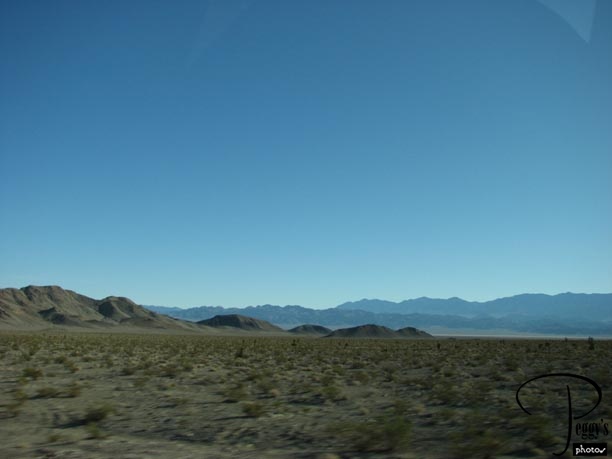
I spent the weekend in Las Vegas, Nevada. I had hoped to take a day tour to Zion National Park, where I haven’t been yet, but out of all the tens of thousands of visitors that weekend to Vegas, I was the only one signed up for the tour––the tour needs at least two people for it to go. However, a day tour was going to Death Valley, where I had already been, but I was game. I went on a Pink Jeep Tour––actually, the jeep was an SUV painted pink. Two of my fellow tourmates were visiting from Berlin, Germany. Another two were from Strasbourg, France, who were visiting a French woman who lives in Vegas who also came on the tour. I was hearing French being spoken on my left side, German being spoken on my right side, and English being spoken in the middle. I felt like I was in Europe. Photo: We drove through many, many miles of Nevada desert. The Death Valley National Park is about two hours from Las Vegas.

On the Way to Death Valley
On the Way to Death Valley
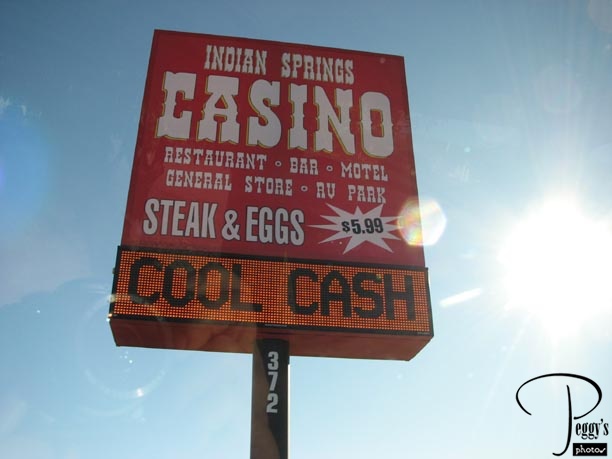
We made a pit stop at the Indian Springs Casino.

On the Way to Death Valley
On the Way to Death Valley
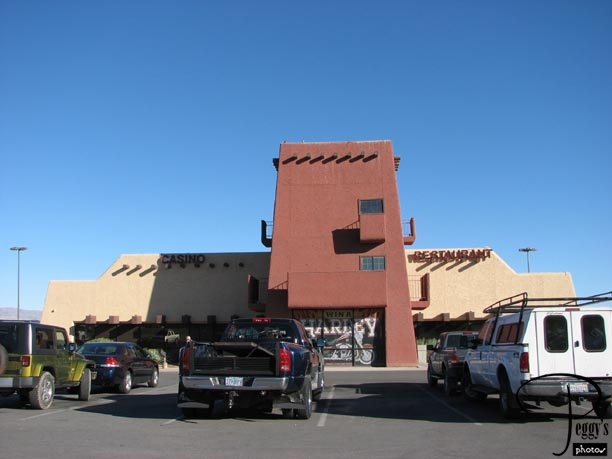
The Indian Hills Casino.

On the Way to Death Valley
On the Way to Death Valley
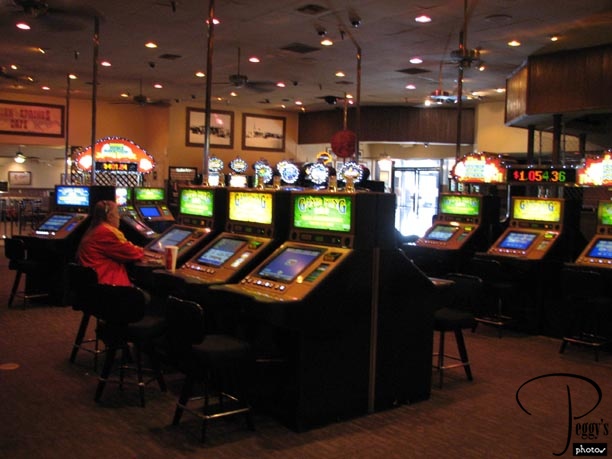
Inside the Indian Hills Casino. It looked like a roadhouse bar with slot machines and a very lonely place to gamble. However, the casino is right near Nellis Air Force Base, so it probably gets a lot of action at certain times.

On the Way to Death Valley
On the Way to Death Valley
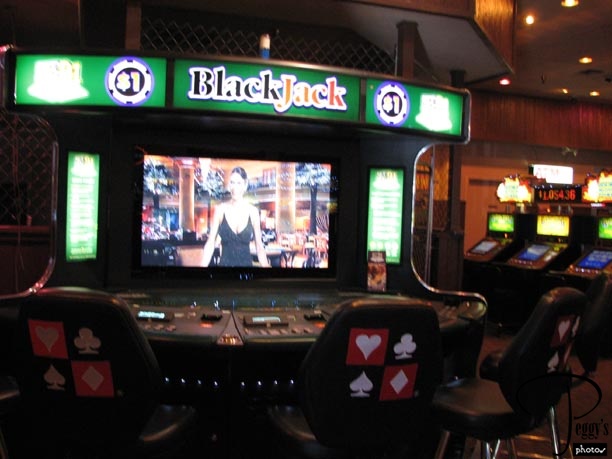
This is the first time I had seen an electronic blackjack table. I was told by my cousin who’s company makes electronic gambling machines that there are similar machines for other games as well.

On the Way to Death Valley
On the Way to Death Valley
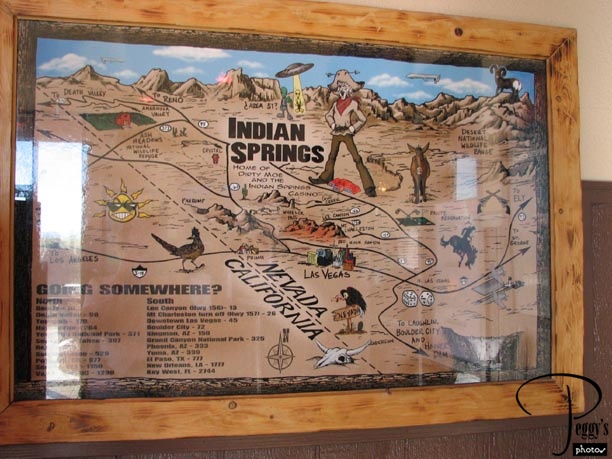
Interesting map at the Indian Springs Casino.

On the Way to Death Valley
On the Way to Death Valley
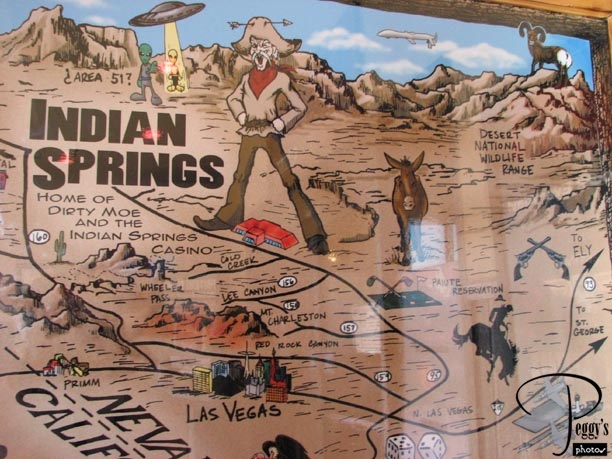
Close–up of the map. You can see Las Vegas on the map, Red Rock Canyon (a great place to visit), and Mt. Charleston, where I went to the next day.

On the Way to Death Valley
On the Way to Death Valley
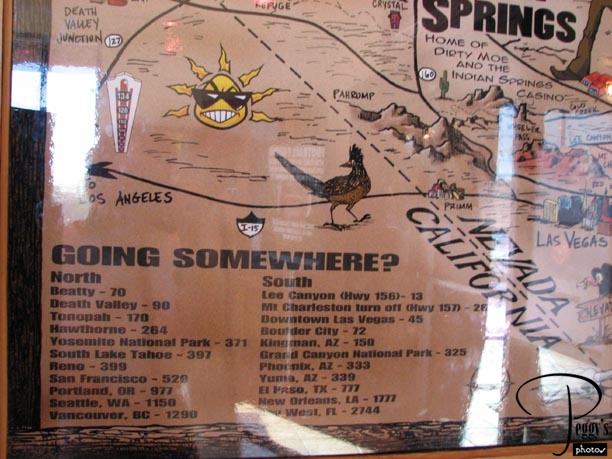
Going Somewhere? The map says that we are 90 miles from Death Valley.

On the Way to Death Valley
On the Way to Death Valley
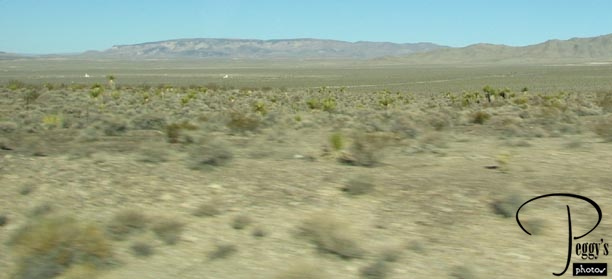
Passing the Nellis Air Force Base where the Predator is based. The Predator is an UAV––unmanned aerial vehicle, which is used for reconnaissance but can also fire off two missiles. Our tour guide/driver said that he often sees the Predator in the air. We didn’t. Nearby, we were also passing the Nevada Test Site, which is 65 miles from Las Vegas. Between 1951–1992, there were 928 announced nuclear tests at the site, 828 of them underground. There are tours from Las Vegas to the test site.

On the Way to Death Valley
On the Way to Death Valley
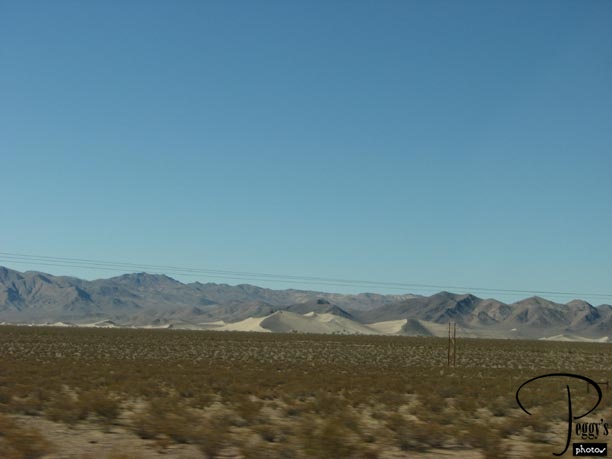
Sand dunes. The sand is from Death Valley, carried by the wind.

On the Way to Death Valley
On the Way to Death Valley
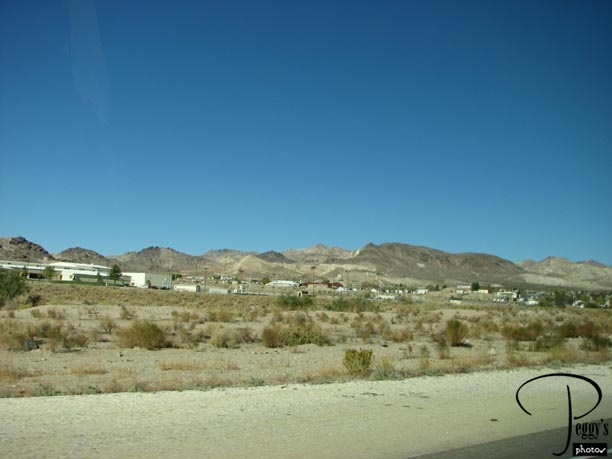
Coming into the town of Beatty, with a population of 1,154 at the 2000 census.

On the Way to Death Valley
On the Way to Death Valley

Beatty General Store. There are some Old West buildings in the town but I was on the wrong side of the SUV to take photos of them. I would have enjoyed stopping in Beatty but our tour guide, Jason, drove through Beatty as fast as he could. He said he has nightmares of someday getting stuck in Beatty and not being able to leave. He breathed a sign of relief when we were out of Beatty.

On the Way to Death Valley
On the Way to Death Valley–Rhyolite
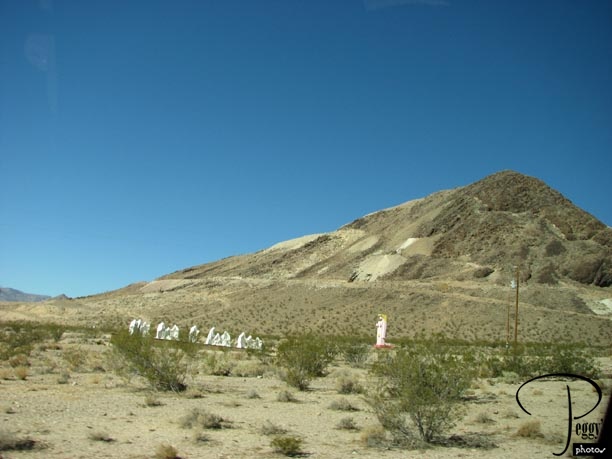
About 4 miles out of Beatty, on Highway 374, is the ghost town of Rhyolite, located in the Bullfrog Hills, about 120 miles from Las Vegas. Our first stop at Rhyolite was at the Goldwell Open Air Museum, a museum of outdoor sculptures really in the middle of nowhere.

On the Way to Death Valley–Rhyolite
Rhyolite
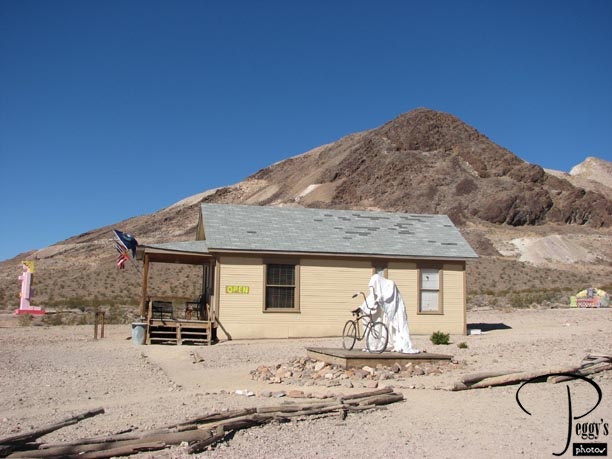
The Goldwell Open Air Museum building with one of the sculptures in front of it.

Rhyolite
Rhyolite

Close–up of the “Ghost Rider.” The sculptor’s name is Albert Szukaliski, who was a Belgian artist who died in 2000. He had a live model pose and then draped a plastic–soaked fabric over the model.

Rhyolite
Rhyolite
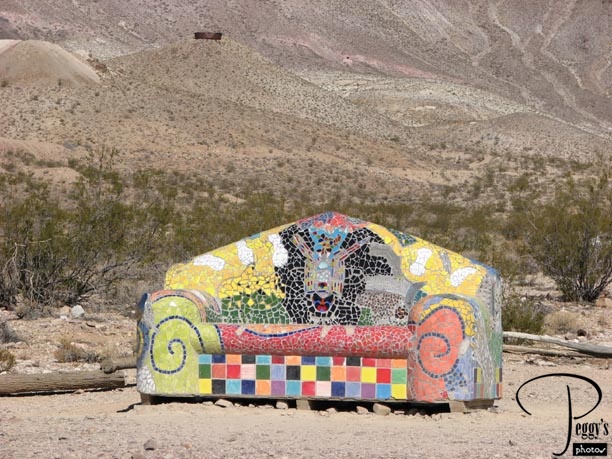
The mosaic bench seen in the background of the last photo, entitled “Sit Here,” is by Sofie Siegman, placed in 2004. Not of the mosaic quality of the Gaudi benches in Barcelona, but close to the quality of the mosaic benches outside Grants Tomb in New York City.

Rhyolite
Rhyolite
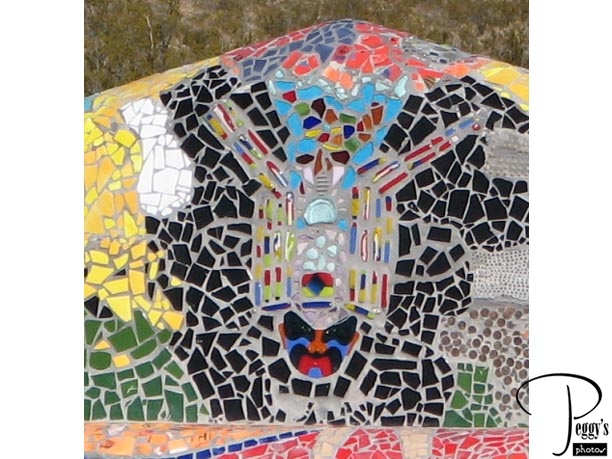
Close–up of the mosaic bench.

Rhyolite
Rhyolite

Rock Circle. You are supposed to walk around in it and meditate.

Rhyolite
Rhyolite
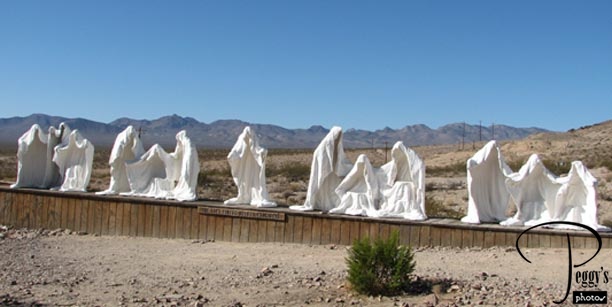
“The Last Supper” by Albert Szukaliski. He thought that the sculpture would last about two years in the desert climate. It has lasted now 25 years––placed in 1984.

Rhyolite
Rhyolite
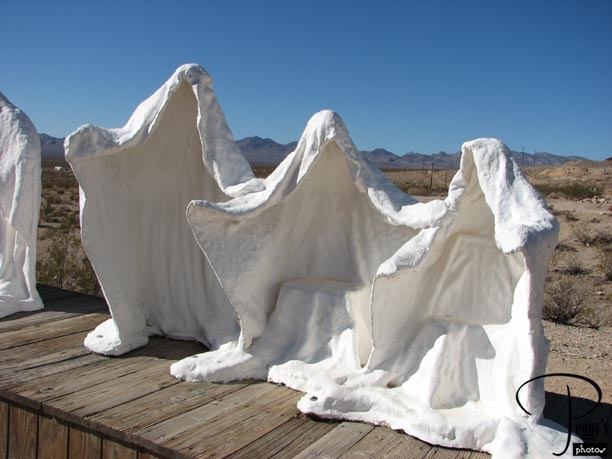
Close–up of part of “The Last Supper.” I didn’t want to walk around too much taking photos of the sculptures here as this is rattlesnake country. I was on the lookout and thankfully didn’t see any suspicious movement on the ground.

Rhyolite
Rhyolite
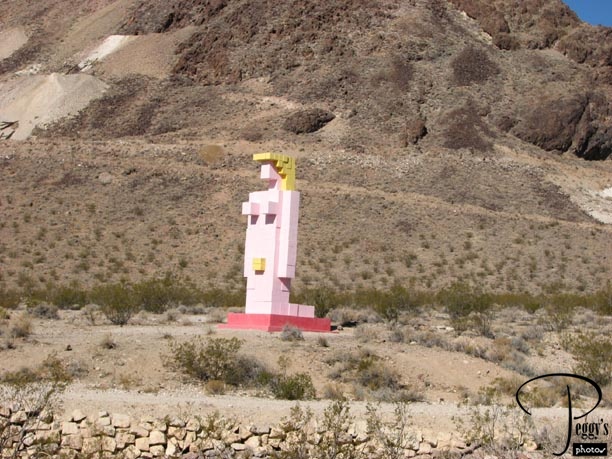
“Lady Desert––The Venus of Nevada,” by Hugo Heyrman in 1994.

Rhyolite
Rhyolite
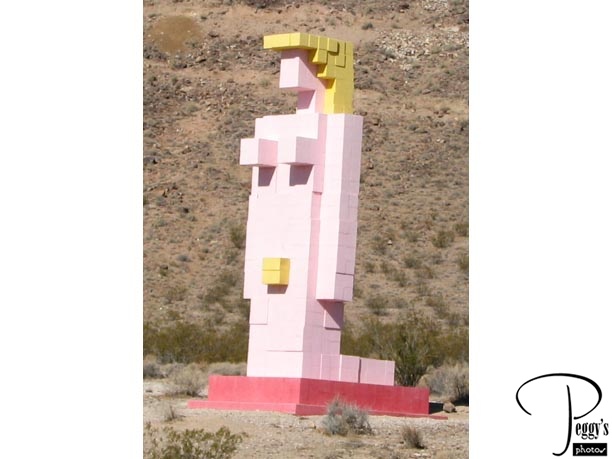
Another view of “Lady Desert.”

Rhyolite
Rhyolite
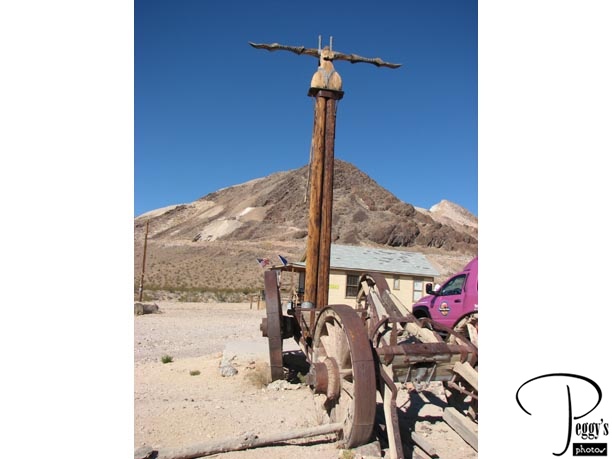
“Icara,” by Dre Peeters, 1992. It is a wood carving of a winged woman reaching up to the sky.

Rhyolite
Rhyolite
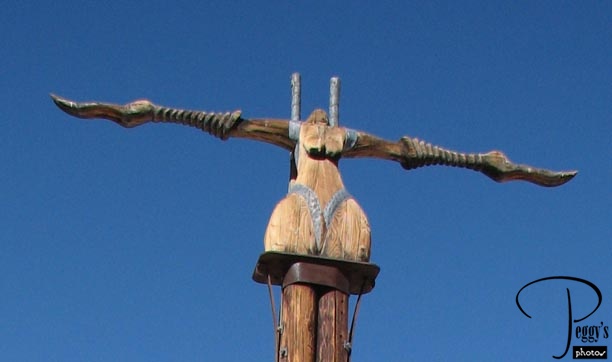
Close–up of “Icara.”

Rhyolite
Rhyolite
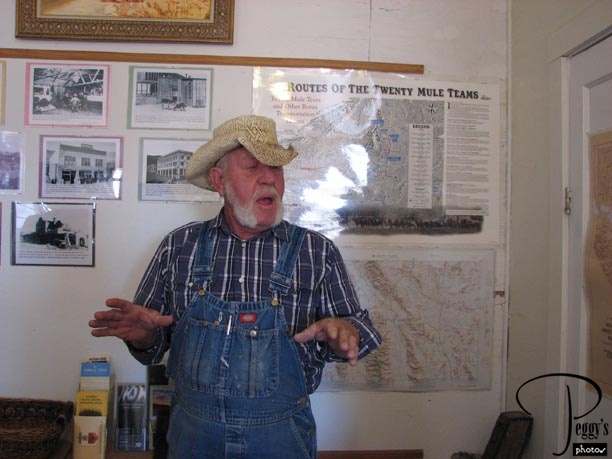
The caretaker of the Goldwell Open Air Museum.

Rhyolite
Rhyolite
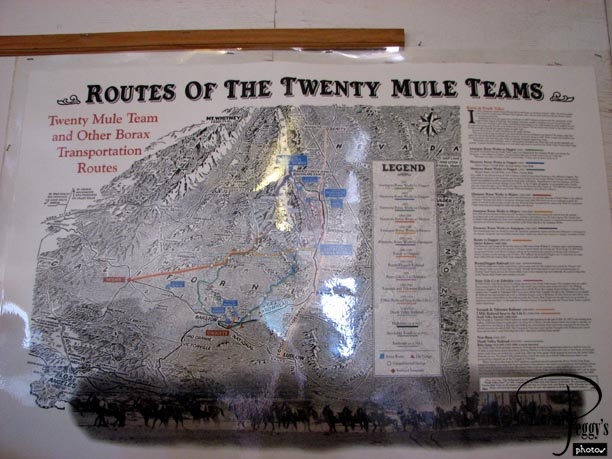
Interesting map of the Routes of the Twenty Mule Teams in the museum. The mule teams carried the borax taken from the mines in Death Valley.

Rhyolite
Rhyolite
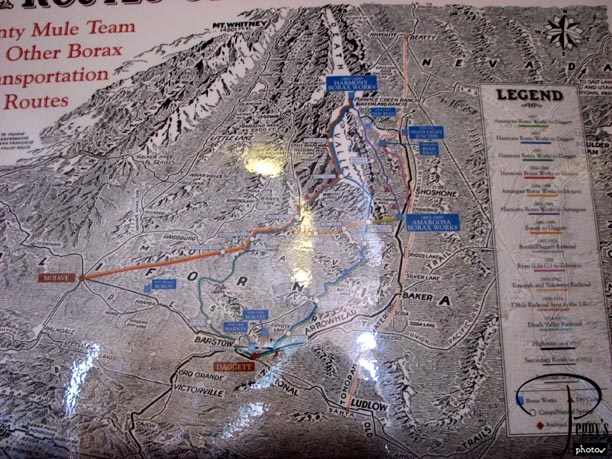
Close–up of the map.

Rhyolite
Rhyolite

For sale at the museum.

Rhyolite
Rhyolite
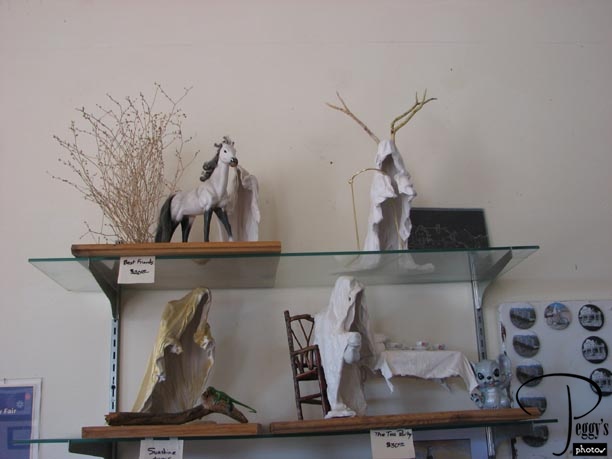
Also for sale at the museum.

Rhyolite
Rhyolite
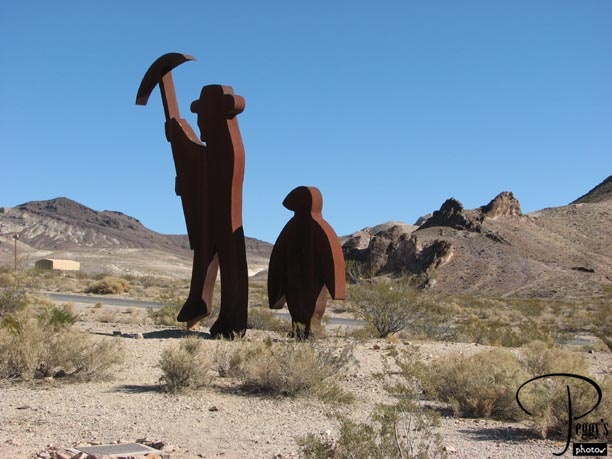
“Tribute to Shorty Harris,” by Fred Bervoets, 1994. Shorty, along with his prospecting pal, E.L. Cross, discovered the gold in the hills that led to the founding of the town of Rhyolite (other mining towns were also founded near here because of their gold discovery). Shorty is called the “dean of the all the desert prospectors.” The statue is of a prospector and a penguin. The penguin comes from that when Shorty had too much to drink he saw a penguin following him.

Rhyolite
Rhyolite
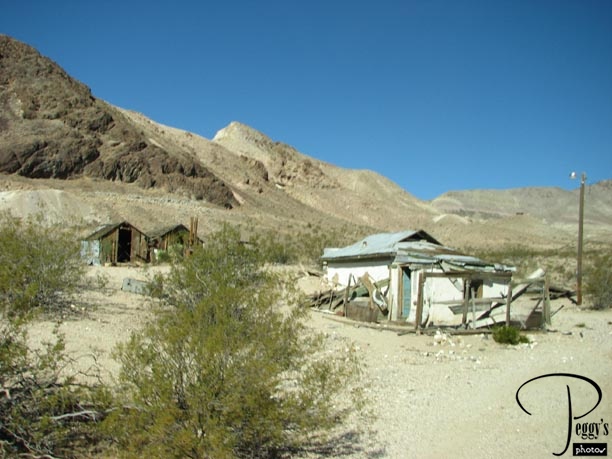
Wooden buildings of Rhyolite. Rhyolite began as a mining camp in 1905. Then the industrialist Charles M. Schwab bought the Montgomery Shoshone Mine in 1906 and invested in the infrastructure of Rhyolite.

Rhyolite
Rhyolite
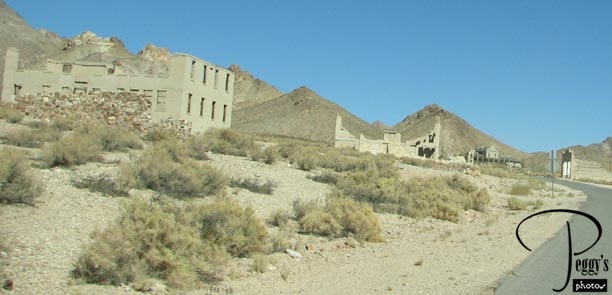
View going up the hill from the museum. The ghost town of Rhyolite is mainly of cement buildings. Under Charles M. Schwab, by 1907, Rhyolite had electricity, water mains, telephones, newspapers, a hospital, a school, an opera house, a train depot, a bank, and a stock exchange. It’s population was between 3500 and 5000. The mine closed in 1911 after the richest ore was extracted. By 1920, Rhyolite’s population was close to zero.

Rhyolite
Rhyolite
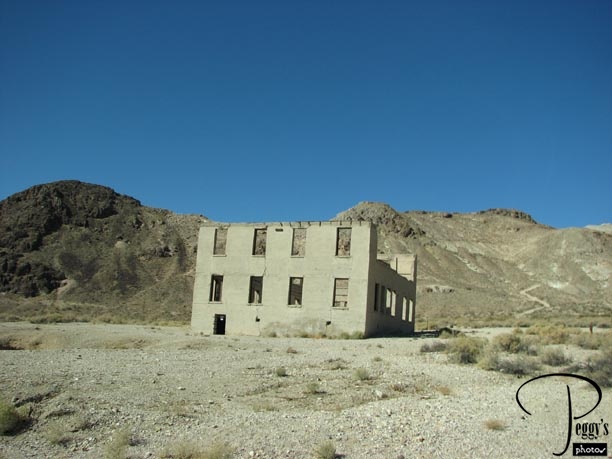
The school.

Rhyolite
Rhyolite
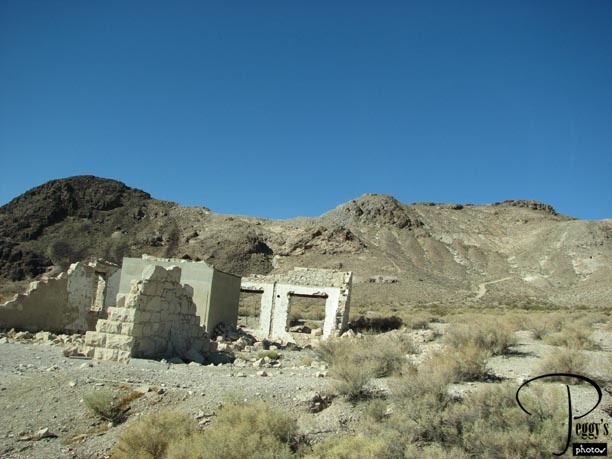
The Overbury Building, 1907. The First National Bank of Rhyolite was housed in this three–story building before moving into the Cook Bank building.

Rhyolite
Rhyolite
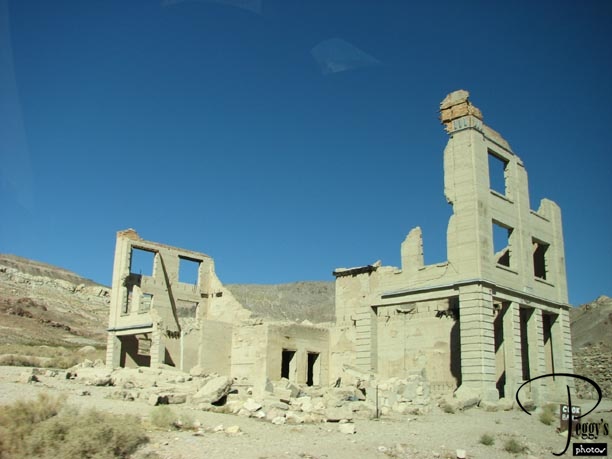
The Cook Bank Building. Our tour guide told us that this is the most photographed building in the state of Nevada. You’ll see why in some of the following photos.

Rhyolite
Rhyolite
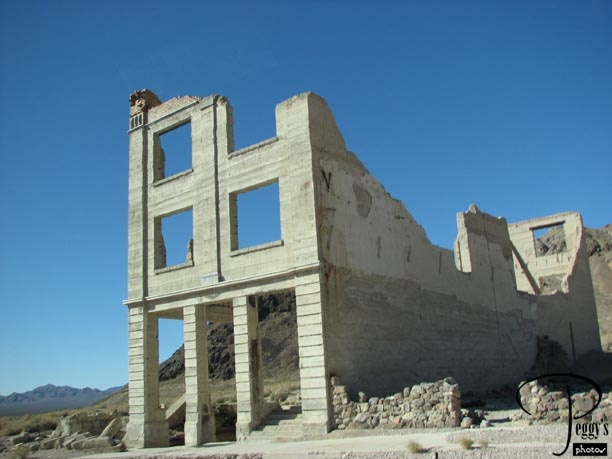
Another view of the Cook Bank Building.

Rhyolite
Rhyolite
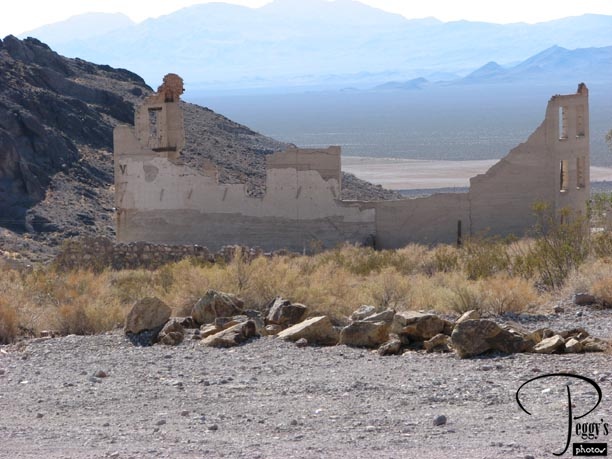
The Cook Bank Building viewed from the hill above it.

Rhyolite
Rhyolite
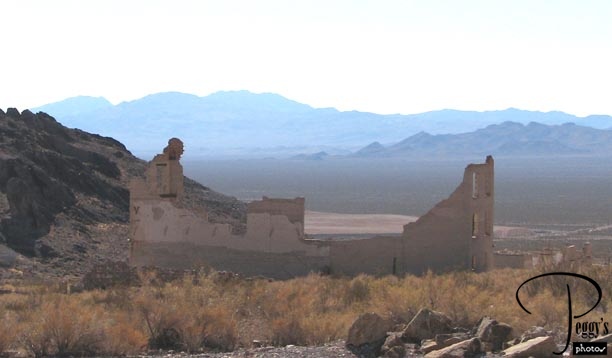
Another view of the Cook Bank Building from the hill above it.

Rhyolite
Rhyolite
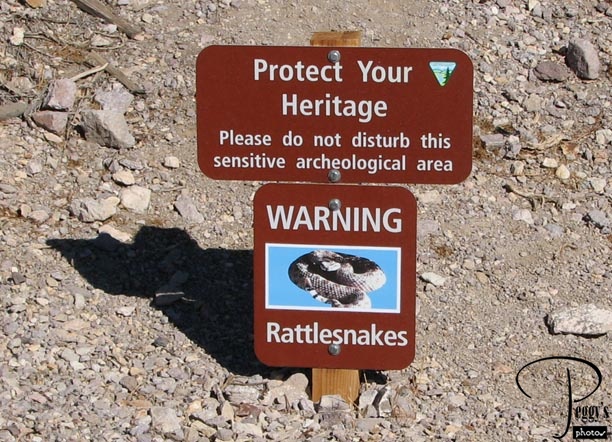
We made a pit stop at the top of the hill, where we saw this sign. We had our tour guide check out the bathrooms for critters before we went into them.

Rhyolite
Rhyolite
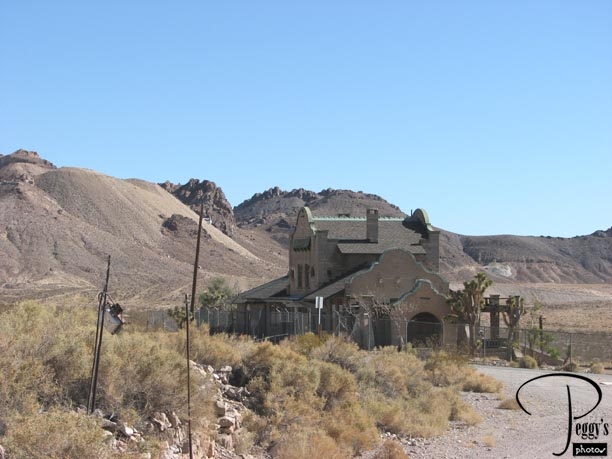
The train depot. Three train lines went through Rhyolite.

Rhyolite
Rhyolite
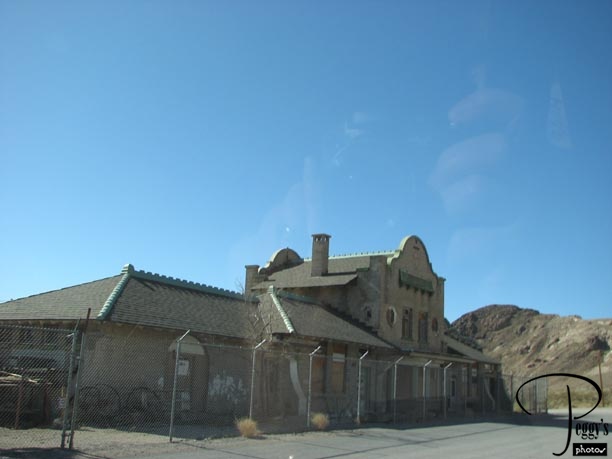
Another view of the train depot.

Rhyolite
Rhyolite
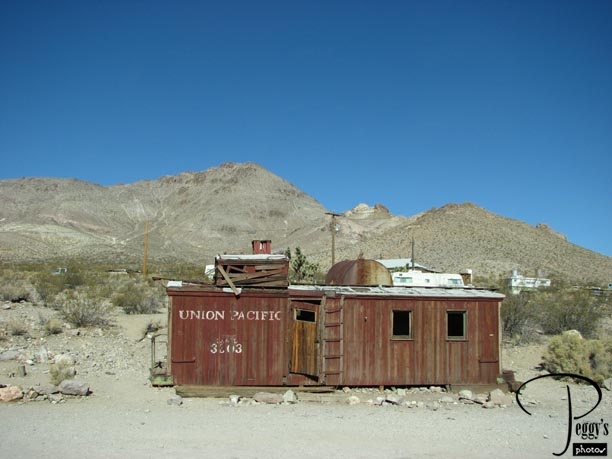
A caboose.

Rhyolite
Rhyolite
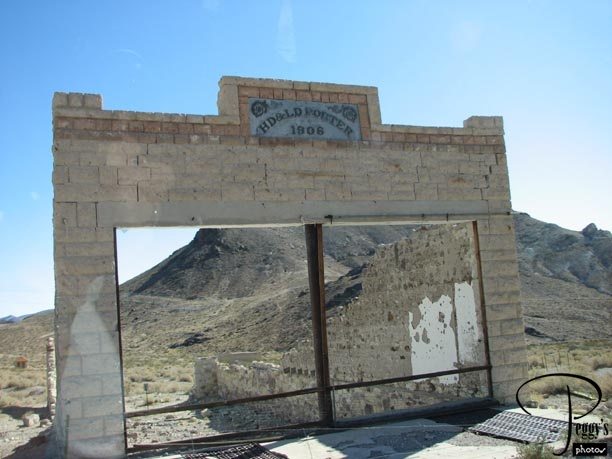
The Potter Store, 1906.

Rhyolite
Rhyolite
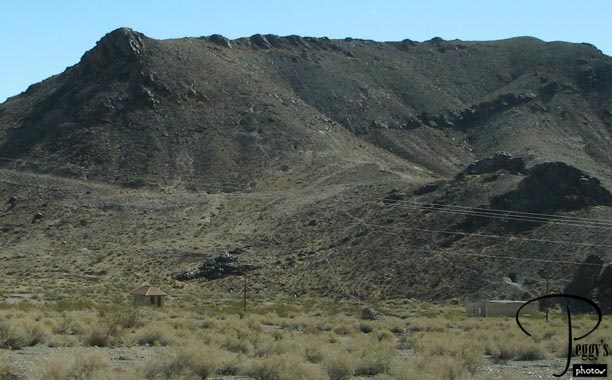
There are two buildings in this photo: on the left is a bordello, and on the right, the jail.

Rhyolite
Rhyolite
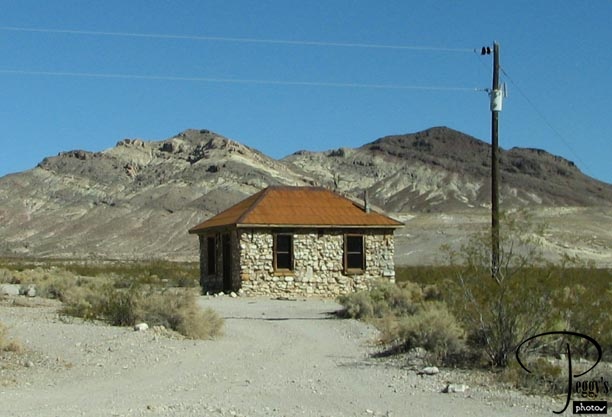
The bordello. No mention of it is on any Rhyolite website that I found, but our tour guide said it was a bordello. Odd that this building is one of the few buildings that has been restored.

Rhyolite
Rhyolite
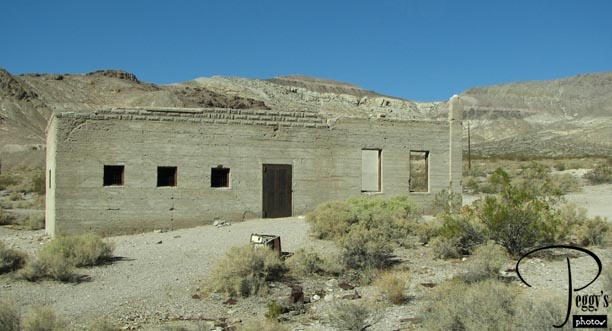
The jail.

Rhyolite
Rhyolite
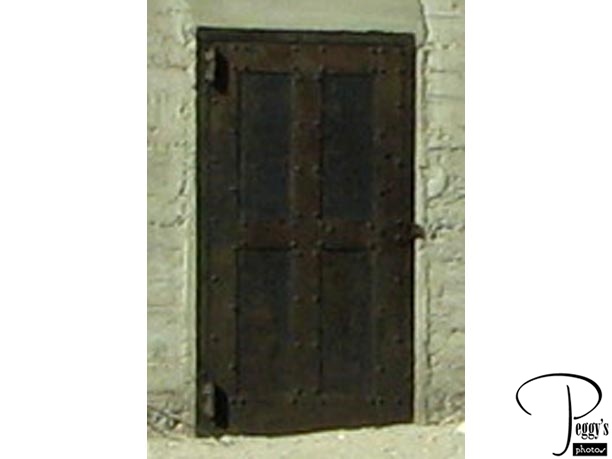
Close–up of the jail’s old door.

Rhyolite
Rhyolite
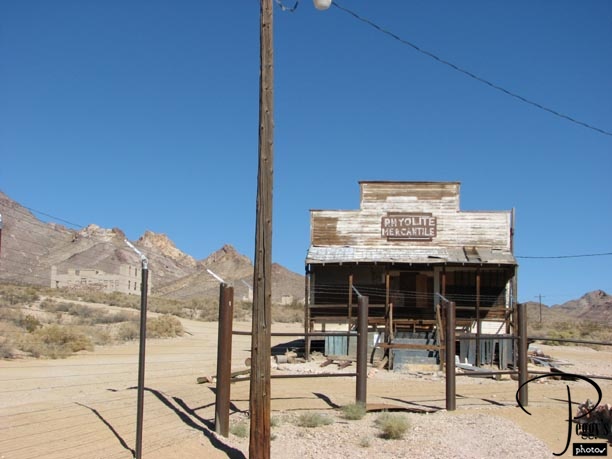
The Rhyolite Mercantile Building, still standing.

Rhyolite
Rhyolite
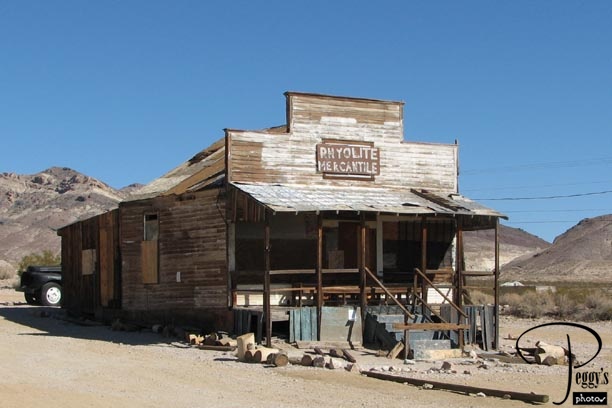
Another view.

Rhyolite
Rhyolite
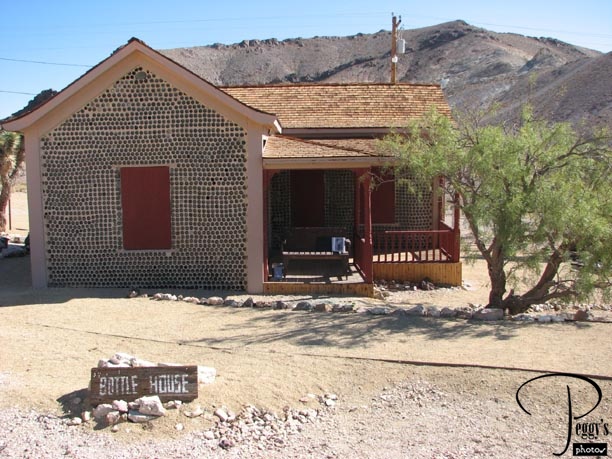
The Bottle House, made up of 10,000 bottles. The outside of this house has been restored.

Rhyolite
Rhyolite
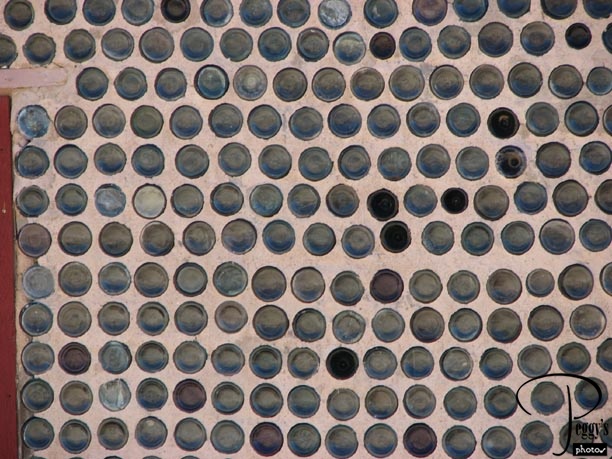
Close–up of the outside of the Bottle House.

Rhyolite
Rhyolite
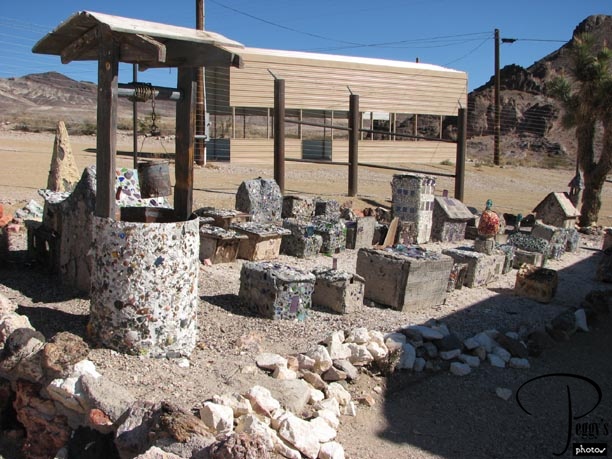
On one side of the Bottle House is a cement and mosaic replica of Rhyolite made by the children of the town. It was an activity to keep the children from wandering off into the desert.

Rhyolite
Rhyolite
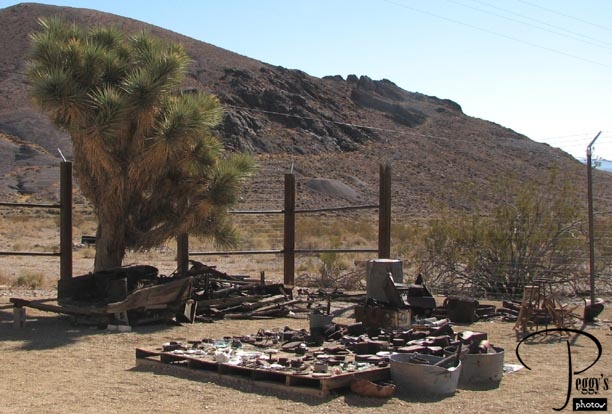
Old things from the town of Rhyolite laid out on the other side of the Bottle House.

Rhyolite
Rhyolite
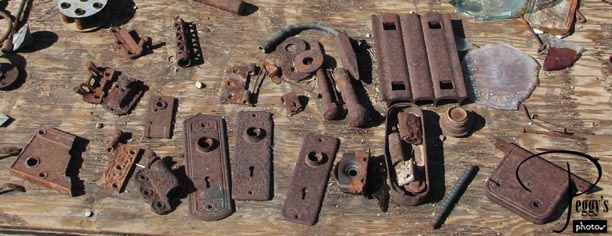
Close–up of some of the items. I was hoping that these would be for sale: the fancy hinges and the keylock door plates. I could use them on the doors in my house. No, not for sale, but I read on the Internet that much of what was retrieved from Rhyolite found its way to Beatty. Maybe some is still for sale there, though I doubt that I will ever be here again. From Rhyolite, we made our way to Death Valley, which will be on the next album.
